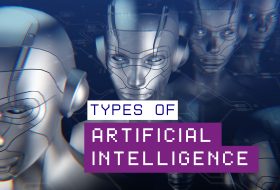Computer Science and Engineering domain offers diverse opportunities to explore various concepts and technologies that provides a solid foundation for building a successful career. The mini-projects in CSE stream are great starting points in various topics like databases, web development, networking, cloud computing, blockchain, AI, ML, and software development. These projects are designed to be manageable as mini projects and will give you practical experience on important tools and techniques. This will help you learn practically and develop a strong understanding of different areas in CSE. We are presenting several ideas for mini-projects across diverse topics. You can explore these and apply your skills in multiple facets of computer science.
Operating Systems Projects
Projects related to the subject matter of operating systems sharpen the skills of CSE students in designing algorithms, programming at system level, managing resources, concurrency handling, and optimizing efficiency. These mini-projects would provide deep understanding about the compression algorithms, CPU scheduling, and memory management and make the students better equipped for the challenges of real-world systems.
- File compression tool
Methodology: Create a tool that compresses and decompresses files using algorithms like Huffman Encoding or Run Length Encoding or RLE. The project would involve understanding data compression techniques and file handling in an operating system. You would also work on implementing a basic command-line interface (CLI) to allow users to choose files for compression and decompression.
- Process scheduling simulator
Methodology: Implement a simulator that mimics different process scheduling algorithms, such as First-Come, First-Served (FCFS), Shortest Job Next (SJN), Round Robin (RR), and Priority Scheduling. You can create a console application where the user inputs the arrival time and burst time of processes. The system calculates the waiting time, turnaround time, and completion time based on the selected algorithm.
Database Management Projects
Working on mini-projects in database management allows computer engineering students to develop the skills required in database architecture, transaction management, and data integrity. These projects enhance their design ability in efficient databases, implementation of user interfaces, and handling large datasets and provide a solid foundation for work on further database development.
- Library management system
Methodology: In this project, you can design a system that manages books in a library. You will use a relational database (like MySQL or SQLite) to store details about books, users, and transactions. The system will allow users to check out books, return them, and search for available books. You can also implement an Admin panel to add, delete, and update book records. Use CRUD operations i.e. Create, Read, Update, Delete for database manipulation.
- Student enrollment system
Methodology: Create a simple database application where students can enroll in courses, view their results, and track their academic progress. The database will have tables for students, courses, and enrollments. You can design a user interface or UI for both students and administrators to interact with the system and manage data. In this work, you will need to implement both SQL queries and develop a simple user interface for interaction.
Cloud Computing Projects
Doing projects in cloud computing helps students acquire first-hand experience in cloud architecture, virtualization, and distributed systems. Projects such as building a cloud-based application or deploying services on AWS or Azure enhance skills to scale, manage resources effectively, and ensure the security of solutions developed.
- Cloud-based note-taking app
Methodology: Design a simple cloud-based note-taking application, enabling users to write, save, edit, and delete notes. It would utilize a cloud database like Firebase or AWS DynamoDB, and the application will sync between multiple devices. Front-end is built using React or Flutter while the back-end utilizes Node.js and Express to manage authentication of the user and management of the data.
- File storage and sharing system
Methodology: You shall develop a cloud file storage and sharing system where users upload files to store on the cloud and share the same with others through a link. In the development, you will be using a cloud service provider such as AWS S3, Google Cloud Storage, or Firebase to store the files. You may include a web interface to upload and share files and implement user authentication for controlling access.
Artificial Intelligence and Machine Learning Projects
Artificial Intelligence and Machine Learning projects are in huge demand due to popularity of these topics. These projects enable engineering students in computer science stream to master skills in data preprocessing, model evaluation, and algorithm optimization. Projects involving the development of a chatbot or image classifier expose students to predictive analytics, automation, and intelligent system development, thus giving them an edge in AI/ML careers.
- Image classifier using CNN
Methodology: This project involves creation of an image classification system using Convolutional Neural Networks (CNNs) to classify images into different categories. You can start with a small dataset like MNIST (for digit classification) or use CIFAR-10 for general objects. The project will involve using frameworks like TensorFlow or PyTorch to train the model.
- Spam email classifier system
Methodology: Classify emails as spam or not spam using machine learning and labeled dataset like the SpamAssassin dataset to train classification model, say Naive Bayes, Logistic Regression, or SVM. Gather real-life expertise in text classification and machine learning algorithms with this project.
Cybersecurity Projects
Various mini projects in cybersecurity domain develop the skills for network security, threat detection, and data protection for CSE students. Developing a firewall or making a an encryption system teaches how to identify vulnerabilities, protect systems, and prepare responses for cyberattacks, in turn helping students prepare for careers in securing digital infrastructures.
- Password strength checker
Methodology: Build a tool that checks the strength of a password based on various rules like length, special characters, uppercase, and digits. The system can assign a strength score and provide feedback to the user. This project will involve regular expressions and text processing to validate passwords against common security best practices.
- Basic encryption and decryption system
Methodology: Implement a simple encryption/decryption system that encrypts and decrypts text using algorithms like Caesar Cipher, Vigenère Cipher, or AES. The system should allow the users enter text, encrypt that text with a key, and decrypt the same back to original message. This will help you understand the basics of cryptography technique and secure data transmission.
Networking Projects
For a CSE student, working on networking projects provides hands-on experience in network protocols, data transmission, and network security. For example, building a simple chat application or setting up a secure network teaches students to manage connections, troubleshoot issues, and optimize performance to prepare them for careers in networking and communications.
- Chat application
Methodology: Develop a simple real-time chat application, using socket programming in Java or Python, where users can send messages to each other over network. Both the client and server-side components will be implemented. In this, the server will be managing the connections and clients will be sending messages. You will acquire experience with networking concepts like TCP/IP, sockets, and client-server architecture.
- File transfer system
Methodology: Implement a file transfer system where users can send files over a network. You will use socket programming for the client and server communication. The system should be able to handle large files, check for data integrity, and even resume broken file transfers. This project will give you experience in handling network protocols, file I/O operations, and error-handling strategies.
Blockchain Projects
Doing Blockchain mini projects would hone the skills of CSE students in decentralized systems, cryptography, and smart contract development. Projects, like developing a simple cryptocurrency or supply chain tracker, help practice distributed ledger technology, data security, and transaction transparency, giving the individual an edge in careers dealing with Blockchain technology.
- Cryptocurrency portfolio tracker
Methodology: This cryptocurrency portfolio tracker will allow the users to add their investments and then track the value of the portfolio in real time. It can fetch the data from an API, similar to the CoinGecko API, and calculate the total value of the portfolio. In this tracker, you can also add a feature to visualize data trends using charts. You would, therefore, get to know about blockchain technologies and interact with real-time blockchain data.
- Simple blockchain implementation
Methodology: Implement a simple blockchain structure that mirrors the actual cryptocurrencies. This will ensure that each block contains timestamp data, transactions, and a hash of the preceding block. You may implement it in a simple way in Python or JavaScript. Thus, you’ll learn the core cryptographic principles and distributed ledger technologies powering blockchain networks.
Personal Task Manager Application:
An interesting project idea would be the personal task manager application. The task to be performed is that the user will have to accept adding, editing, deleting, and marking tasks as complete. It is very practical for an introduction to coding and user interaction. Using a language like Python with the Tkinter library, a student can work on a basic graphical interface, while at the same time making tasks stored in a text file and learning how software components talk to one another. Not only is the process teaching very basic programming constructs but also file handling in programming, laying down the foundation for the more complex applications that might later be built.
Methodology:
Initially, you need to specify required task attributes, such as title and status, and even draft a basic layout for buttons and a task display area. Then, you set Python up with Tkinter and develop a main script under the title task_manager.py. Write task management functions to add tasks to the list, edit entries, and delete items. Use file I/O to save tasks to a text file. Develop the UI in Tkinter: entry fields, action buttons, and a list box for tasks. Add and modify the application with tasks; check for data persistence even after closing the application. And finally, make it better by adding error handling for empty inputs and a checkbox to mark a task complete.
Number Guessing Game:
Another good beginner-friendly idea is a number guessing game. The computer picks a number in a range, and the player guesses it, getting feedback like too high or too low (until the guesser gets it right). It is a project that can be accomplished using Python and its random module, and it teaches students about loops, conditionals, and user input. Itself a fun exercise for practice in logical building and debugging, which is present underneath all programming tasks. Adding extra features like a count of guesses can make it more challenging and encourage out-of-the-box solutions.
Methodology:
Initially, you must decide the range of numbers (e.g., 1-100) and the types of hints. A Python script resembling guess_game.py would be created that imports the random module, and generates a random number using the random.randint() method, and loops to prompt guesses, comparing them to the target and offering feedback with if-else statements. Adding improvements to track guesses and indicate how many have been made when a player wins would be good. Testing the game to ensure it terminates properly and that hints are accurate is also a good idea; further refinements could include checking the input to ensure it is numeric.
Weather Forecast Application:
Intermediate projects with more complex concepts and integration with APIs, databases, and systems can be conducted by someone with some experience. A weather forecasting application is an excellent choice since users can input a location to retrieve real-time data on the weather. Students would utilize Python’s requests library to fetch external data in JSON format and parse it from a public API like OpenWeatherMap. Displaying temperature, humidity, and forecasts trains their ability to connect software with online services, a skill important in present-day development.
Methodology:
Obtain an API key from OpenWeatherMap and define the data you want to display such as temperature. Install Python with the requests library in a script named weather_app.py. Fetch data using the API key and city name with the requests.get() method, parse it as a JSON response. Print formatted weather details. Test the application over multiple cities, using exception handling for API errors, and refine it using a Tkinter GUI input-output interface.
Expanse Tracker:
An expense tracker consolidates the intermediate category. It allows users to log income and expenditures, categorize transactions, and view summaries. Along with Python and SQLite for database storage, it exposes students to data management, whereby students learn to create, read, update, and delete information from databases. This makes understanding structured data and ways to apply it in personal finance tools very practical, as it polishes coding and analytical skills.
Methodology:
Define fields (e.g., date, amount) and set up your Python with SQLite in expense_tracker.py. Create a database table and write functions to perform CRUD operations. Prompt input, insert data and calculate category totals. Enter sample data for testing and refine it using a Tkinter GUI.
Face Recognition System:
Advanced projects challenge students to deal with cutting-edge technology and complicated systems, and this is one such endeavour-a face recognition system, which professes to recognize persons in images or video. The students can use Python with OpenCV and face_recognition libraries to encode facial features and match them against a dataset. Thus, the students are given ample exposure to the realms of computer vision and machine learning with applications in security and automation, concurrently improving their skills in handling multimedia data.
Methodology:
Collect a labelled face dataset and set up Python with OpenCV and face_recognition in face_recog.py. Encode training images, compare test image encodings and identify matches. Test with known and unknown faces; refine using real-time webcam detection.
Blockchain-Based Voting System:
The blockchain voting system poses another intellectually demanding project. A decentralized environment is created where votes are stored securely and transparently. Using cryptographic hashing and Python, the students will implement a simulation of the blockchain that ties each vote to the one that preceded it. In addition to the focus on distributed systems and cryptography, the project sets students up for new advances in digital trust and governance.
Methodology:
Vote structure definition and Python environment installation with hashlib in blockchain_vote.py. A Block class will be defined, with timestamps, data, and hashes, linking blocks in a chain. Cast the votes as blocks, verify chain integrity, and polish the result with a Flask interface.
IoT Smart Home Controller:
IoT smart home controllers push students into the integration of hardware and software. They build a system using Raspberry Pi and Python to enable control of devices from a mobile app over MQTT or for remote control of appliances like lights or fans. This project is all about embedded systems and networking and reflects how IoT has become a phenomenon in residential and industrial spaces: thus teaching students how to bridge the physical world and the digital world.
Methodology:
Choose devices (for example, LED) and install Raspberry Pi with GPIO and MQTT. Connect hardware, code to toggle it, and command with MQTT. Test functionality and refine using a Flask or Tkinter app.
Conclusion
These mini-projects cover diverse topics in Computer Science and Engineering, offering hands-on experience to enhance skills and knowledge.










